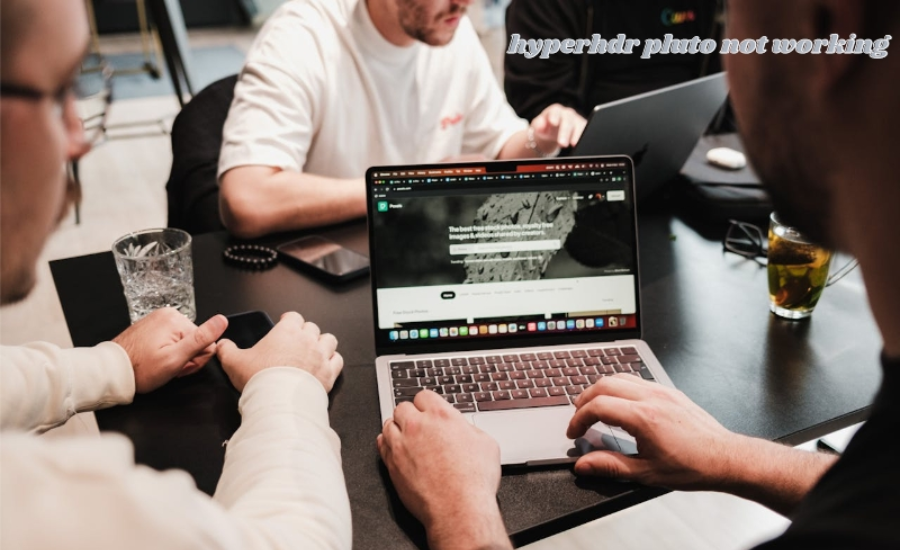HyperHDR has recently gained popularity for its ability to capture screen content and synchronize additional lights to create an immersive experience. However, some users have encountered issues, specifically with the HyperHDR Pluto component not functioning as expected. This article will explore the reasons behind these issues and offer practical solutions to address them.
Many users appreciate HyperHDR for enhancing their home entertainment systems, as it helps adjust ambient lighting to match on-screen colors in real time. Despite its growing fan base, the Pluto component has presented some challenges, leading to frustration for those hoping for seamless integration. These issues can stem from a variety of factors, including hardware compatibility, software bugs, or improper configurations.
By understanding the common causes behind these problems, users can troubleshoot effectively. Some common solutions include ensuring that your hardware is fully compatible, updating software and drivers to the latest versions, and double-checking configurations. In many cases, these steps can resolve issues with the HyperHDR Pluto feature and restore its intended functionality.
What Is HyperHDR?
Before we address the “HyperHDR Pluto not working” issue, it’s important to first understand what HyperHDR is. HyperHDR is a specialized software designed for ambient lighting systems, such as Ambilight or custom DIY lighting projects. Its primary function is to analyze video content in real-time, then control RGB LEDs to create immersive lighting effects. This enhances the overall visual experience by adjusting brightness and color to match the display, turning ordinary screens into a vibrant, captivating viewing environment.
Pluto TV, on the other hand, is a widely-used free streaming platform offering a variety of movies, TV shows, and live content. When integrated with HyperHDR, the goal is to synchronize ambient lighting with the media being streamed on Pluto TV, giving viewers a cinema-like experience. However, when users face the “HyperHDR Pluto not working” issue, it can ruin the immersive effect. Let’s explore the reasons behind these technical problems and how to resolve them effectively.
Common Causes Of “HyperHDR Pluto Not Working”
There are several reasons why HyperHDR might not work properly with Pluto TV. Identifying the root cause is essential for resolving these issues. Below are some of the most common factors:
1. Connection Problems
A frequent reason for HyperHDR malfunctioning is poor or unstable connections. The proper functioning of HyperHDR relies on secure connections between various hardware components such as LED strips, USB video grabbers, or HDMI splitters. Loose cables, faulty hardware, or miscommunication between devices can result in HyperHDR failing to synchronize correctly.
2. Misconfigured Settings
Incorrect settings in the HyperHDR software can also cause problems when syncing with Pluto TV. Users sometimes struggle to configure the software properly, leading to issues like flickering lights or failure of the system to work entirely. Proper configuration is critical to achieving smooth operation and lighting synchronization.
3. Outdated Software
Using an outdated version of HyperHDR can introduce compatibility issues, particularly with Pluto TV. Software updates often include crucial bug fixes and performance improvements, so ensuring HyperHDR is updated to the latest version is a key step in avoiding malfunctions.
4. Hardware Compatibility Issues
In some cases, the hardware setup may not be fully compatible with HyperHDR or Pluto TV. USB grabbers, splitters, or LED lights that don’t meet the system requirements may cause the system to underperform or fail to function. Ensuring that all hardware components meet the necessary specifications can help avoid these issues.
5. Network and Bandwidth Limitations
Poor network conditions or insufficient bandwidth can also disrupt HyperHDR’s functionality. Inconsistent internet connectivity may cause synchronization delays or prevent the system from working altogether, especially when streaming from Pluto TV.
How To Fix HyperHDR Pluto Not Working Issues
If you’re encountering the “HyperHDR Pluto not working” issue, you’re not alone. Many users face similar challenges, but there are effective solutions you can try. Below are several methods to help you troubleshoot and resolve this problem:
1. Inspect Hardware Connections
When HyperHDR isn’t functioning properly with Pluto TV, the first thing to check is the hardware connections. Make sure all cables, including those for the USB grabber, HDMI splitter, and LED strips, are securely connected. A loose cable can disrupt the entire system, causing it to malfunction or work inconsistently. Additionally, verify that all devices are receiving adequate power. If power is insufficient, the system may either shut down or perform erratically.
2. Update HyperHDR Software
Using an outdated version of HyperHDR can lead to compatibility issues with Pluto TV. To fix this, ensure that you have the latest version of HyperHDR installed. Check the GitHub repository or the official product website for the most recent updates, which often include essential bug fixes and improvements in compatibility. Keeping your software up to date is a key step in resolving any performance-related problems.
3. Correct the Configuration Settings
Misconfigured settings are another common reason for the “HyperHDR Pluto not working” issue. Review the settings within HyperHDR to ensure everything is properly configured. This includes checking the screen capture area, verifying the correct LED mapping, and calibrating the colors. If you’re unsure about the setup, consulting community forums or official guides can provide helpful tutorials on configuring both HyperHDR and Pluto TV for optimal performance.
4. Test with Different Devices or Platforms
If HyperHDR is malfunctioning with Pluto TV, try testing it with other streaming platforms, like Netflix or YouTube. This can help determine if the issue is specific to Pluto TV. If HyperHDR works well with other services, the problem might lie within Pluto TV. In this case, consider reinstalling the Pluto TV app or checking its settings for any irregularities.
5. Restart the System
If none of the above solutions resolve the problem, try rebooting your entire setup. This includes restarting your television, HyperHDR software, and any connected accessories. Rebooting the system can clear any temporary glitches or issues that may have been causing HyperHDR to malfunction.
By following these steps, you should be able to troubleshoot and fix the “HyperHDR Pluto not working” issue, restoring the seamless experience you’re looking for.
Advanced Solutions For Fixing HyperHDR Pluto Issues
If basic troubleshooting hasn’t resolved the “HyperHDR Pluto not working” issue, there are a few more advanced solutions that might do the trick.
1. Upgrade to a High-Quality USB Grabber
Some users have reported that low-quality USB grabbers can cause HyperHDR to underperform. Switching to a higher-quality HDMI USB grabber that matches your display’s resolution and refresh rate can often fix this issue. Ensure that the grabber you select is compatible with your system’s specifications for optimal performance.
2. Test with an Alternative Video Source
If HyperHDR continues to have issues with Pluto TV, the problem may be tied to the video source itself. To troubleshoot, try using a different media player, an alternate HDMI port, or even a different streaming platform. This will help determine if the problem is with Pluto TV or another part of your setup.
3. Adjust Frame Rate and Resolution Settings
Mismatches in frame rate and resolution between HyperHDR and Pluto TV can cause synchronization issues. Make sure that both the resolution and frame rate of Pluto TV are in sync with your HyperHDR setup. You may need to lower these settings to improve compatibility and get the system to work properly.
4. Check Network Connectivity
If you are using a wireless connection to stream Pluto TV, poor network performance or interference can disrupt the synchronization between HyperHDR and your media stream. To resolve this, consider switching to a wired connection for better reliability, or improve your wireless network setup to ensure stable streaming. This can help resolve many of the connectivity issues that may be causing the problem.
By following these advanced solutions, you should be able to address more complex issues related to HyperHDR’s performance with Pluto TV and enjoy a smoother viewing experience.
Advanced Solutions For HyperHDR Pluto Issues
If the basic troubleshooting steps haven’t fixed the “HyperHDR Pluto not working” problem, it’s time to consider more advanced solutions. These methods can help improve performance and resolve more complex issues:
1. Upgrade to a Higher-Quality USB Grabber
A common issue with HyperHDR can be related to the quality of the USB grabber being used. Lower-quality or incompatible USB grabbers can cause performance problems, affecting the synchronization between HyperHDR and Pluto TV. Upgrading to a better HDMI USB grabber that matches your display’s resolution and refresh rate can significantly enhance functionality and deliver a smoother experience.
2. Test with a Different Video Source
If HyperHDR still doesn’t work properly, it might be helpful to test it with another video source. Try switching to a different media player, HDMI port, or streaming service to determine if the issue is specific to Pluto TV. This will help identify whether the problem lies with Pluto TV itself or if it’s a broader issue impacting your setup.
3. Adjust Frame Rate and Resolution Settings
Sometimes, a mismatch in the frame rate or resolution between HyperHDR and Pluto TV can lead to synchronization problems. To resolve this, make sure both platforms are using compatible settings. You may need to lower the resolution or adjust the frame rate for better alignment and improved performance. This can help ensure that HyperHDR operates more smoothly alongside Pluto TV.
4. Optimize Your Network Setup
If you’re streaming Pluto TV over a wireless connection, network interference or a weak signal could be the root cause of synchronization issues with HyperHDR. For better performance, consider switching to a wired Ethernet connection or improving your wireless network’s strength. A more stable internet connection will provide better streaming quality and help prevent potential issues with HyperHDR.
FAQs
1. Why is HyperHDR not working with Pluto TV?
Several factors could cause this issue, including poor hardware connections, outdated software, incorrect configuration settings, or network-related problems. Ensuring proper setup and compatibility can resolve the issue.
2. How do I fix connection issues with HyperHDR and Pluto TV?
Check the physical connections of your USB grabber, HDMI splitter, and LED strips. Ensure that all devices are powered correctly and that no cables are loose or disconnected.
3. Does using an outdated version of HyperHDR affect performance?
Yes, using an outdated version can cause compatibility issues. It’s essential to keep HyperHDR updated to the latest version, as updates often include bug fixes and performance improvements.
4. Can network problems affect HyperHDR’s performance?
Yes, network instability, especially with wireless connections, can disrupt the synchronization between HyperHDR and Pluto TV. A wired connection or improved Wi-Fi setup can help ensure smooth operation.
5. What should I do if changing settings doesn’t solve the problem?
If adjusting the settings doesn’t fix the issue, try switching to a different media player, HDMI port, or even a different streaming platform to identify if the issue is specific to Pluto TV or your overall setup.
Conclusion
The “HyperHDR Pluto not working” issue can arise from several factors, ranging from hardware connection problems to software incompatibility or network issues. By following both basic and advanced troubleshooting steps, including checking connections, updating software, adjusting settings, and optimizing the network, most users should be able to resolve the issue and enjoy a more immersive viewing experience. Should the problem persist, consider testing alternative video sources or upgrading your hardware for better compatibility.
Stay in touch with us for more updates and alerts! Ventstribune

